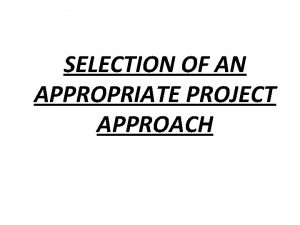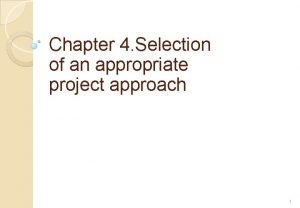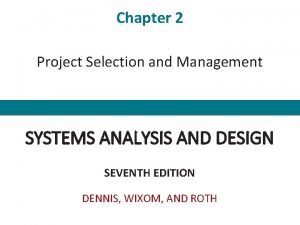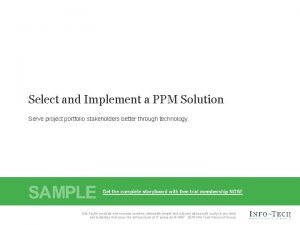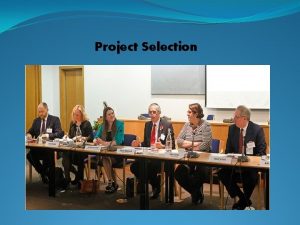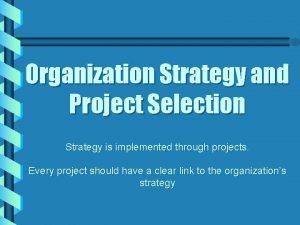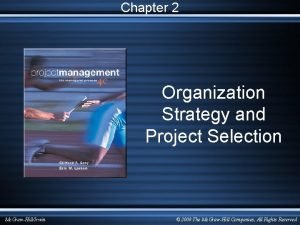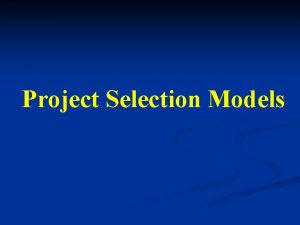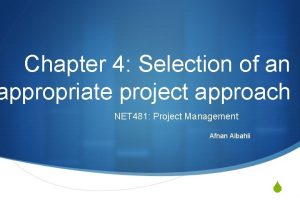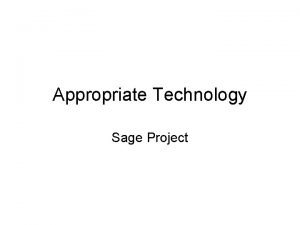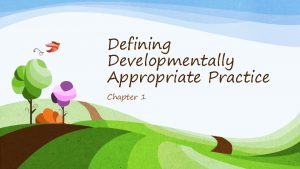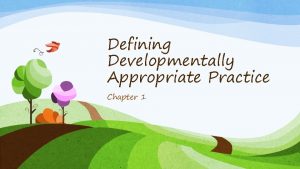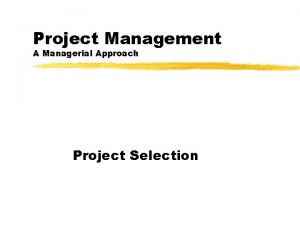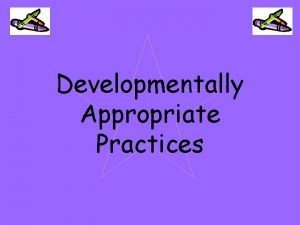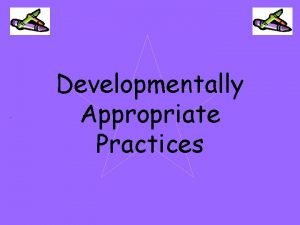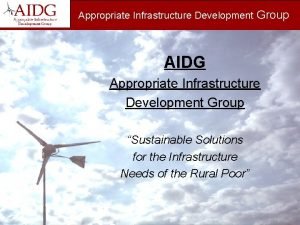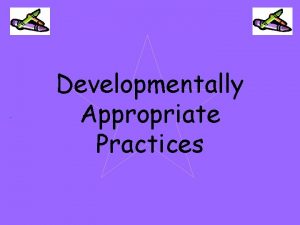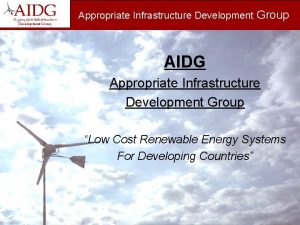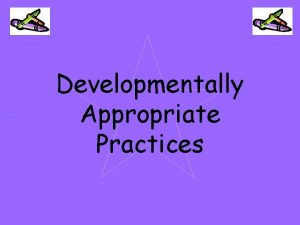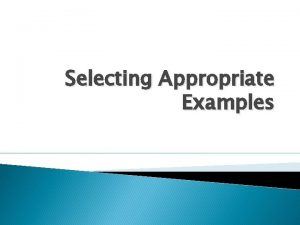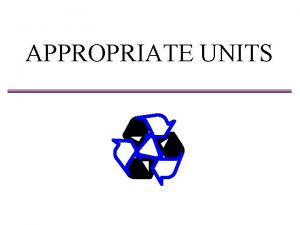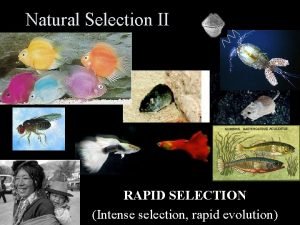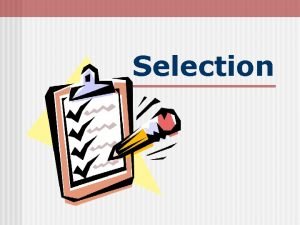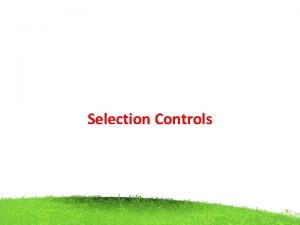Chapter 4 Selection of an appropriate project approach





























- Slides: 29

Chapter 4. Selection of an appropriate project approach 1

‘Step Wise’ - an overview 1. Identify project objectives 0. Select project 2. Identify project infrastructure 3. Analyse project characteristics Review 4. Identify products and activities Lower level detail 10. Lower level planning 9. Execute plan 5. Estimate effort for activity 6. Identify activity risks activity For each 7. Allocate resources 8. Review/ publicize plan 2

Step 3 Analysis of project characteristics 3. 1 Distinguish the project as either objective or product-based. ◦ Object v/s Product ◦ Is there more than one way of achieving success? ◦ Mostly in earlier stage projects are objective and in later stage it become product driven 3

Step 3 Analysis of project characteristics 3. 2 Analyze other project characteristics (including quality based ones) ◦ ◦ what is different about this project? Whether it is a information system or embedded system? What are the critical issues? Malfunctioning threatened human life? 4

Step 3 continued 3. 3 Identify high level project risks ◦ ‘what could go wrong? ’ ◦ ‘what can we do to stop it? ’ 3. 4 Take into account user requirements concerning implementation ◦ For example customer want the product in java 3. 5 Select development methodology and life cycle approach ◦ waterfall? Increments? Prototypes? ◦ Generally Company use the same method or SDLC as they were using in past ◦ It also depends on project need. 5

Analyse project characteristics There is two way to develop a software: ◦ In-house ◦ Software houses Either it is in-house development or by software houses it is required to review methodologies and techniques for each project This process of reviewing is known as technical planning or project analysis 6

Steps of project analysis Identify project as either objective driven or product driven Analyse other project characteristics ◦ Is a data-oriented or process-oriented Data oriented- Information systems Process oriented- embedded control system ◦ Will the software to be produce is a general tool or application specific? ◦ Are there tool available for implementing the particular type of application? ◦ Is the system to be critical? ◦ What is the nature of hardware and software environment? 7

Steps of project analysis Identify high level project risk ◦ Some of the risks are: Product uncertainty Process uncertainty Resource uncertainty ◦ Take into account user requirement concerning implementation. ◦ Select general life-cycle approach 8

Technical plan content list Output of project analysis is technical plan. It contains : ◦ Introduction and summary of constraints: Character of the system to be developed Risk and uncertainties User requirement concerning implementation ◦ Recommended approach Select methodology or process model Development methods Required s/w tools Target hardware/software environment 9

Technical plan content list ◦ Development needs Required development environment Required maintenance environment Required training ◦ Implementations Project products and activities Financial- this report will be used to produce costing 10

LIFE CYCLE MODELS 11

Waterfall The waterfall model 12

Waterfall the ‘classical’ model every stage needs to be checked and signed off Ideal for: ◦ Where requirement are well defined ◦ Development methods are well understood BUT ◦ limited scope for iteration 13

V-process model Another way of looking at the waterfall model 14

3. Spiral Model 15

Evolutionary delivery: prototyping ‘ An iterative process of creating quickly and inexpensively live and working models to test out requirements and assumptions’ Main types: ‘throw away’ prototypes evolutionary prototypes What is being prototyped? human-computer interface functionality 16

Reasons for prototyping learning by doing improved communication improved user involvement a feedback loop is established reduces the need for documentation reduces maintenance costs i. e. changes after the application goes live prototype can be used for producing expected results 17

Prototyping: some dangers users may misunderstand the role of the prototype lack of project control and standards possible additional expense of building prototype focus on user-friendly interface could be at expense of machine efficiency 18

INCREMENT DELIVERY MODEL 19

Incremental delivery delivered system design build install evaluate increment 1 first incremental delivery design build install increment 2 evaluate second incremental delivery design build install evaluate increment 3 third incremental delivery 20

Increment Delivery Model(cont. ) In this model we break the application down into small components. These components are then implemented and delivered in sequence. 21

The incremental process Incremental delivery 22

Incremental approach: benefits feedback from early stages used in developing latter stages user gets some benefits earlier Easy to control and manage project may be put aside temporarily BUT there are some possible disadvantages loss of economy of scale ◦ More productivity at larger scale ‘software breakage’ 23

The incremental delivery plan The nature and order of each increment to be delivered to the user have to be planned. Elements of increment plan are: ◦ System objective ◦ Incremental plan ◦ Open technology plan 24

System objective Project planner ideally wants well defined objective but as much freedom as possible about how to be met. Objectives ◦ Function goal Objective Jobs the system is to do Computer/non-compute function to achieve them ◦ Quality Goal Reliability , response and security 25

Open technology plan If it is required to add new components continually to the system should be extendible, portable and maintainable So it require: ◦ A standard high level language ◦ A standard operating system ◦ Small modules ◦ A standard DBMS 26

The outline incremental plan Steps ideally 1% to 5% of the total project Ideal if a step takes one month or less: ◦ not more than three months Each step should deliver some benefit to the user Some steps will be physically dependent on others 27

‘rules of thumb’ about approach to be used IF uncertainty is high THEN use evolutionary approach IF complexity is high but uncertainty is not THEN use incremental approach IF uncertainty and complexity both low THEN use one-shot IF schedule is tight THEN use evolutionary or incremental 28

Combinations of approach construction installation one-shot incremental evolutionary one-shot yes no incremental yes no evolutionary yes yes one-shot or incremental installation - any construction approach possible evolutionary installation implies evolutionary construction 29
 Selection of an appropriate project approach
Selection of an appropriate project approach Selection of an appropriate project approach
Selection of an appropriate project approach Appropriate patient selection
Appropriate patient selection Research approach
Research approach Balancing selection vs stabilizing selection
Balancing selection vs stabilizing selection Artificial selection vs natural selection
Artificial selection vs natural selection K selection r selection
K selection r selection Natural selection vs artificial selection
Natural selection vs artificial selection Difference between continuous and discontinuous variation
Difference between continuous and discontinuous variation Disruption selection
Disruption selection Clumped dispersion
Clumped dispersion Natural selection vs artificial selection
Natural selection vs artificial selection Two way selection and multiway selection
Two way selection and multiway selection Multiway selection in c
Multiway selection in c Mass selection
Mass selection Virtual circuit vs datagram
Virtual circuit vs datagram Cognitive approach vs behavioral approach
Cognitive approach vs behavioral approach Waterfall and shower approach
Waterfall and shower approach Multiple approach avoidance conflict
Multiple approach avoidance conflict Bandura's reciprocal determinism
Bandura's reciprocal determinism What is research approach
What is research approach Traditional approach in system analysis and design
Traditional approach in system analysis and design Deep learning approach and surface learning approach
Deep learning approach and surface learning approach Scoring model for project selection
Scoring model for project selection Analougous structure
Analougous structure What are the project selection methods
What are the project selection methods How to select a ppm solution
How to select a ppm solution Project definition pmi
Project definition pmi Jiyo implemented a strategy
Jiyo implemented a strategy Organization strategy and project selection
Organization strategy and project selection
